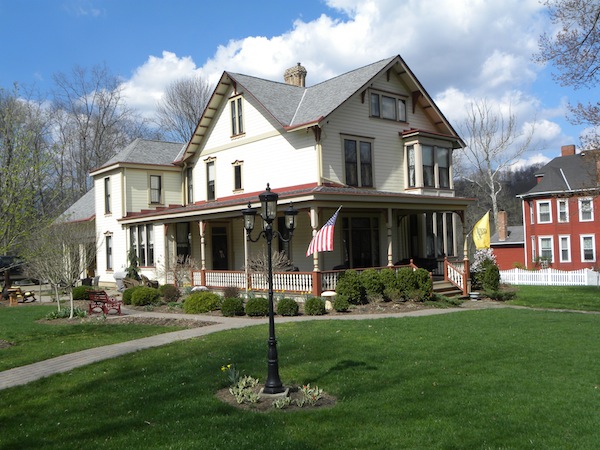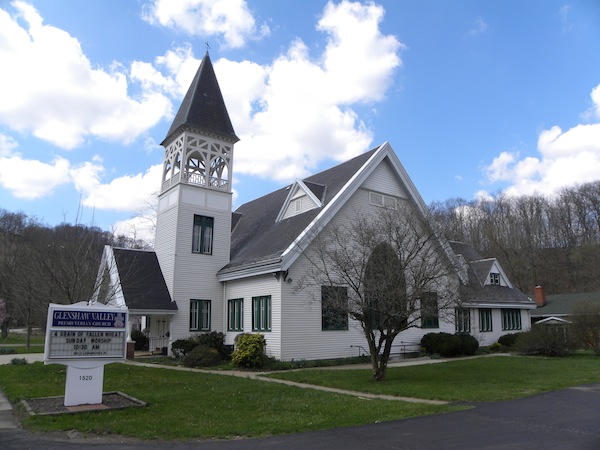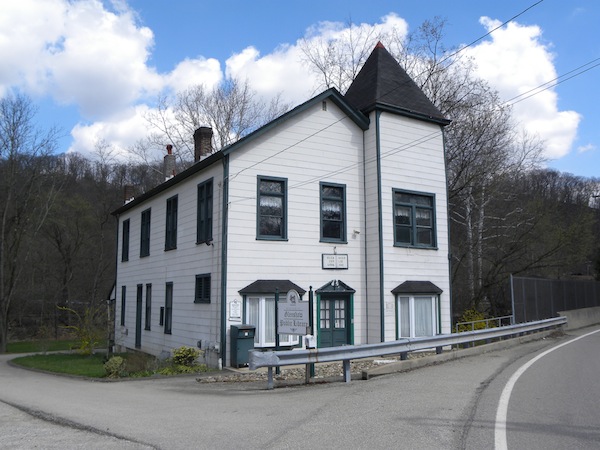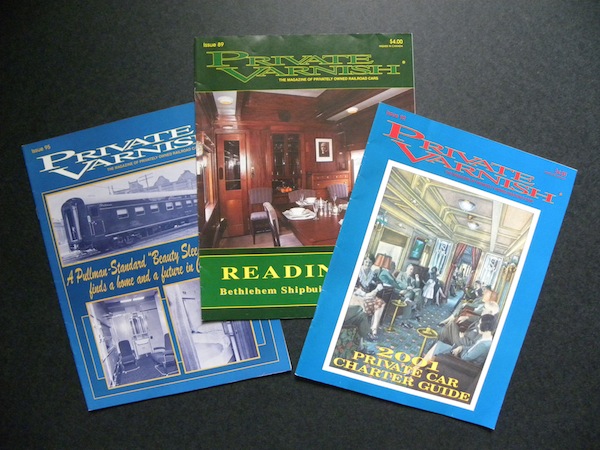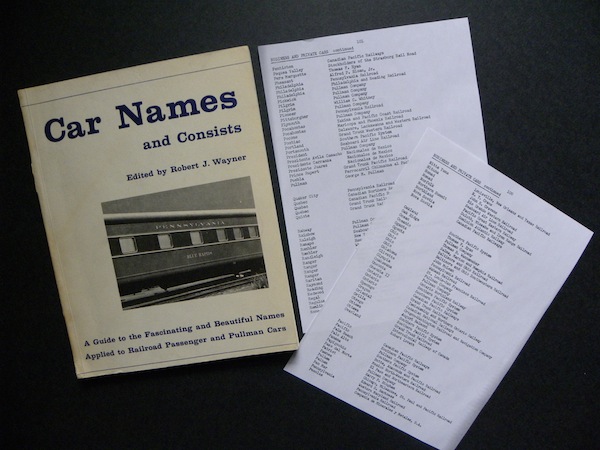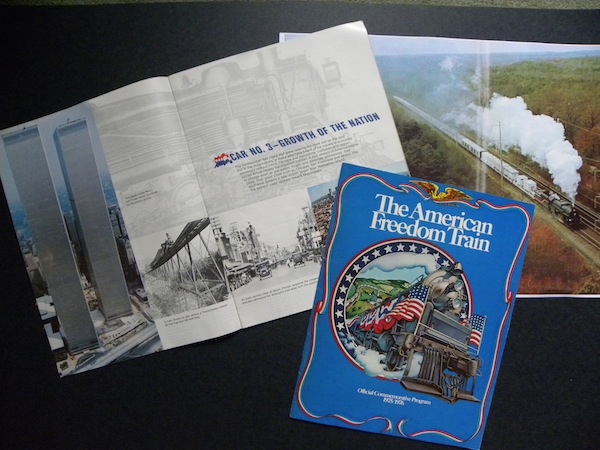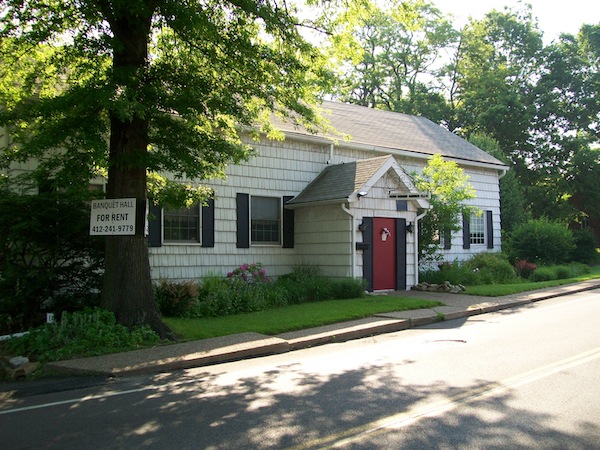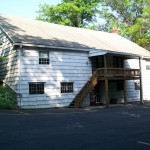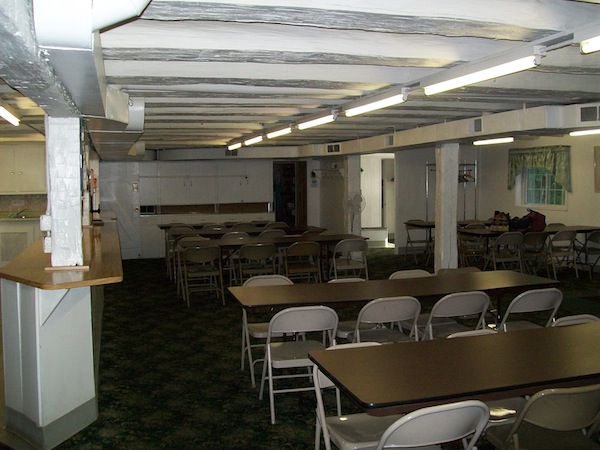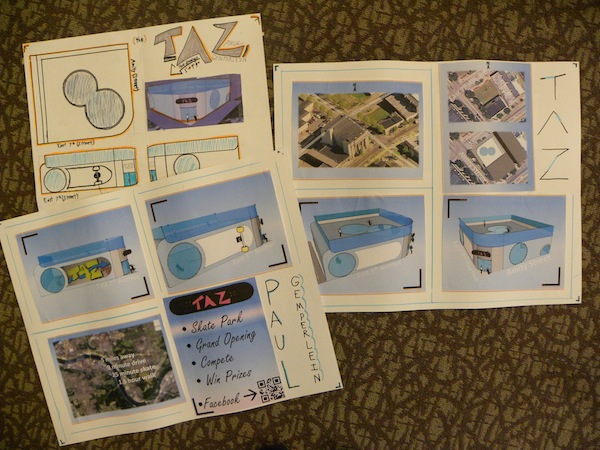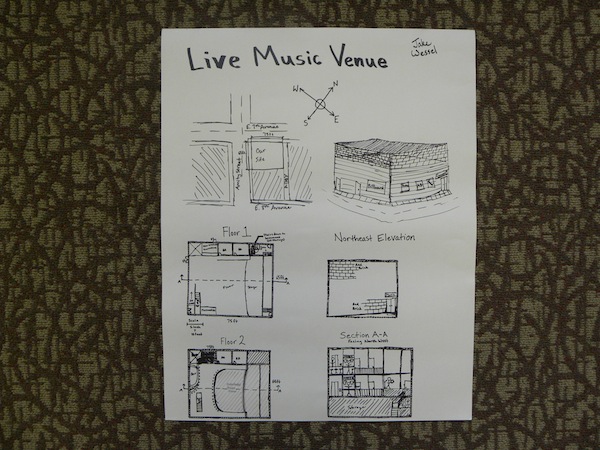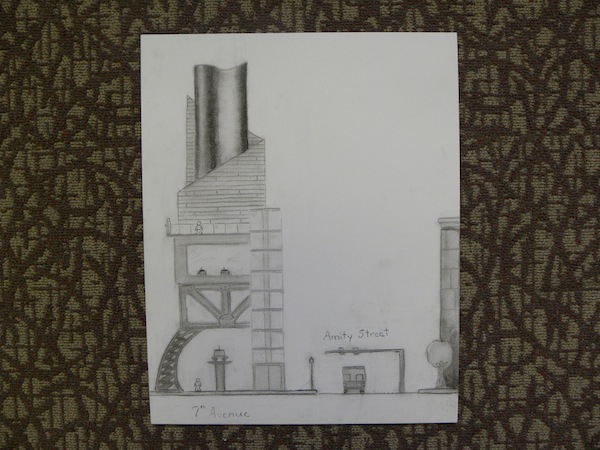
Category Archive: PHLF News
-
Glenshaw Bus Tour Features Two Historic Homes, Church, & Library
Date: Saturday, April 14, 2012
Time: 1:00 to 5:30 p.m.
Travel with us to Glenshaw, just a few miles north of Pittsburgh, to see a major restoration-in-progress of the Isaac Lightner House (1833) and its two outbuildings––the summer kitchen and springhouse; and to tour the beautifully restored Joseph L. Kirk house (1885) on Glenshaw Avenue, as well as the Glenshaw Valley Presbyterian Church (1885) and the public library.
Sue and Tim Dreier and Steve and Peg Ainey, all PHLF members, are welcoming us to the historic Glenshaw community. After a tour of the library we’ll walk next door to the church, where Mr. Ainey will present a brief illustrated lecture in the social hall on the historical significance of Glenshaw; light refreshments will be provided.
We’ll also tour the picturesque church and hear how a grant from PHLF’s Historic Religious Properties Program helped with critical exterior repairs. The tour will wrap up with visits to two architecturally significant historic homes: the Joseph L. Kirk house (1885, Stick style) has been beautifully restored after seven years of work; the Isaac Lightner House (1833, Greek Revival) and outbuildings are in the midst of being restored. The afternoon will be a memorable one!
For reservations, please contact: Mary Lu Denny at PHLF (412-471-5808 ext. 527). Checks and credit cards accepted (VISA, MasterCard, American Express, and Discover).
Meeting/ending locations: Station Square. The bus will be parked alongside the Commerce Court building, opposite the main entrance to the Station Square parking garage. Board at 12:45 p.m.
Fee: $30 PHLF members. $55 non-members (includes a complimentary one-year membership in PHLF. Click here for membership benefits).
Deadline: Paid reservations must be received by Friday, April 6, 2012.
-
ISDA Building Panels Taken Off
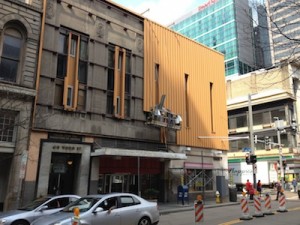 The orange metal panels are gone!
The orange metal panels are gone!Under Mayor Luke Ravenstahl’s Downtown Preservation Program, managed by PHLF in partnership with the Urban Redevelopment Authority of Pittsburgh, the first restoration action has begun: those orange metal panels that covered the upper-floors of the Italian Sons and Daughters of America Building at Forbes Avenue and Wood Street have been removed.
Now people can see the fine stone façade of the original 1929 Germania Savings Bank Building that we knew was there, but we did not know its condition. We entered into a contract with Young Restoration to remove sample panels, beginning on March 13, so that we could take a look, and we were so pleased with the quality of the original façade that we had all the panels removed by March 31.
Passers-by spontaneously applauded our work and the Mayor pointed out that this effect of renewal through restoration of our prized historic buildings would bring new shops and new shoppers to downtown Pittsburgh. 419 Wood Street was erected for the Germania Savings Bank in 1929, in a restrained Art Moderne style. The first floor has housed several restaurants. From 1931 through the 1960s Stouffer’s was the tenant; more recently McDonald’s occupied the space.
The Mayor announced that work would begin within the next several weeks on restoring six more building facades on Wood Street and on Market Street with the Thompson Building. People will see a dramatic difference in the area. PHLF is advocating for the development of women’s retail in the Wood Street corridor, similar to what we have been able to accomplish on Fifth Avenue with Heinz Healey’s Gentlemen’s Apparel and Nettleton Shoes at Market at Fifth.
-
PHLF Advocacy Updates
Historic Review Commission, Local Designations, and Other City Issues
March HRC Meeting. The next meeting of the HRC will be held on March 7, 2012 at 1:00 p.m. in the First Floor Hearing Room of 200 Ross Street. The agenda is available here.
Section 106 Reviews
Liberty Tunnels Restoration Project. PHLF is a “consulting party” to the Liberty Tunnels Rehabilitation Project being undertaken by the Pennsylvania Department of Transportation. The project includes rehabilitating the portal faces of the tunnels to their approximate original appearance in accordance with the U.S. Secretary’s Standards for the Treatment of Historic Properties. The Liberty Tunnels were opened in January 1924 and were determined eligible for the National Register of Historic Places in 1992. PHLF opposed the remodeling of the facades in 1973 and is pleased with the plan for restoration.
National Register Nominations
On January 31, 2012, the National Parks Service listed the Mexican War Streets Historic District (Boundary Increase II) to the National Register of Historic Places. This second boundary increase to the district includes the area bounded by W. North Avenue and Reddour, Eloise, and Federal Streets.
Draft Statewide Preservation Plan Released
The Pennsylvania Bureau for Historic Preservation has released a draft of the 2012-2017 Pennsylvania Statewide Historic Preservation Plan for public review and comment. Work on the plan began in April 2010 and included a public outreach process. The plan is available for download here.
-
Historic Religious Properties Grants for 2012
Thanks to 124 generous donors, PHLF’s Historic Religious Properties Committee has awarded 11 matching grants for a total of $77,180 and four technical assistance awards to churches throughout Allegheny County.
These grants will enable religious congregations to maintain and preserve their historic buildings; to do roof and gutter work, stained glass window restoration, and brick and stone work. They will leverage close to $300,000 in construction projects in 2012.
As part of the awards, PHLF Construction Manager Tom Keffer, will meet with the congregations’ building committees and tour their buildings. He will advise them on maintenance priorities and working with contractors.
These buildings are not only places of worship but also centers of life in their communities. They house social service agencies such as food pantries, clothes closets, child care facilities, and provide meeting places for youth and adult groups.
The following congregations received 2012 HRP Awards:
All Saints Roman Catholic Church, Etna, $9,000 for stained glass window restoration
Birmingham United Church of Christ, $6,000 for gutter and roof work
Community House Presbyterian Church, Central North Side, $9,000 for roof replacement
First Presbyterian Church of Edgewood, $4,180 for exterior painting
First Methodist Church of McKeesport, $9,000 for masonry work
Jesus’ Dwelling Place, North Braddock, $4,000 for pointing and waterproofing
Pacific Sanctuary, Friendship, $4,000 for window installation
Riverview Presbyterian Church, Observatory Hill, $7,000 for stained glass window restoration
Sacred Heart Parish, Shadyside, $8,000 for stained glass window restoration
St. John the Baptist Ukrainian Catholic Church, South Side, $9,000 for roof and chimney work
Sewickley United Methodist Church, $8,000 for chimney and bell tower pointing
Technical Assistance Awards went to:
Homestead United Presbyterian Church
Iglesia Cristiana Tabernacula de Oracion, Beechview
Zion Christian Church, Carrick
Zion Hill Baptist Church, The Hill District
Watch for these projects to be completed through the Spring and Summer of 2012.
-
Creating Stained-Glass Shields and Publishing Poetry & Art Books
Students in the after-school Writer’s Club at Pittsburgh Beechwood created personal coats of arms out of stained glass, thanks to the help of artist Rona Moody. In addition, students from five Pittsburgh Public Schools––Phillips, Roosevelt, Colfax, Beechwood, and Fulton––either have or will soon be sketching Pittsburgh details, composing poetry, and publishing booklets of their work.
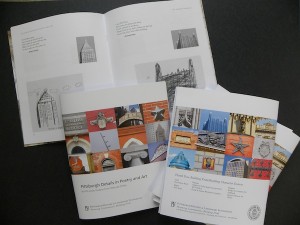
From January to June 2012, PHLF is involving 13 Pittsburgh Public Schools and more than 650 students in grades three through five in social studies and art activities, field trips, and trolley tours as part of its “Building Pride/Building Character” educational program.
These enrichment programs––and many more that are scheduled––are possible because of the contributions PHLF received in the fall of 2011 through the Commonwealth of Pennsylvania’s Educational Improvement Tax Credit Program.
We thank Huntington Bank, PNC Bank, BNY Mellon, ESB Bank, Allegheny Technologies Incorporated, Frank B. Fuhrer Wholesale Company, Bridges & Company, UPMC, and Hefren-Tillotson for their generous support.
Click here for more information on PHLF’s EITC program.
-
Fairbanks Feature: Special Trains and Their Names
James D. Van Trump Library | Frank B. Fairbanks Transportation Archive | Fairbanks Features
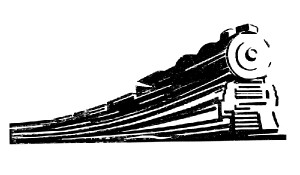 Showcasing a variety of materials located in the Frank B. Fairbanks Rail Transportation Archive
Showcasing a variety of materials located in the Frank B. Fairbanks Rail Transportation ArchiveNo. 13 Presentation
Fairbanks Feature: Special Trains and Their Names
PRIVATE CARS
“A private car is not an acquired taste. One takes to it immediately,” quipped Mrs. August Belmont Jr. nearly a century ago; she was the grande dame of New York City’s Belmont banking dynasty.
“From the late 1800s to the 1930s, private cars were the vehicle of choice for bankers, railroad barons and other wealthy Americans”
–– Myron Beckenstein, Smithsonian magazine, September 2004
BUSINESS CARS
“Business cars were offices on wheels used by railroad officials while away from their home office. A car might be assigned to one individual or several, depending on their rank(s). They were miniature hotels, economical in the use of space. Each car typically contained a parlor lounge (saloon), dining room, kitchen crew quarters, sleeping accommodations for officer(s) and crew, toilet(s) and an open observation platform. Electric call bells, located at strategic points within the car, rang in the kitchen, where an indicator box showed the location of the summons. Cars were equipped with china and silverware (sometimes specially marked), bedding and kitchen equipment. This basic interior arrangement held sway for a century on the PRR.”
––Chuck Blardone, Pennsylvania Railroad Business & Special Cars, a Publication of the Pennsylvania Railroad Technical & Historical Society (Introduction, page 5)
(FIRST) FREEDOM TRAIN
“This seven-car exhibit train was assembled in the Pennsylvania Railroad’s shops at Wilmington, Delaware in 1947. The first car was ex-Santa Fe Railroad baggage car 1896, and carried supplies and equipment. Next came the three cars which displayed the historical documents and memorabilia––these were extensively re-built from Pennsylvania Railroad class P-70 coaches 3465, 3489, and 3510. The Baggage car and the three Exhibit cars were not named. The last three cars in the FREEDOM TRAIN were Pullman sleeping cars, GLEN TEE, CENTRAL PLAINS and KENNETT SQUARE to accommodate Marine Corps guards and other people traveling with the train. The GLEN TEE had 6 compartments and 3 drawing rooms, the CENTRAL PLAINS had 3 compartments, 2 drawing rooms and observation lounge, and the KENNETT SQUARE was apparently a 6 compartment, 3 drawing room car temporarily re-named for Kennett Square, Pennsylvania, which is 10 miles northwest of Wilmington, Delaware.”
–– Robert J. Wayner, Car Names and Consists: A Guide to the Fascinating and Beautiful Names Applied to Railroad Passenger and Pullman Cars (page 110, published 1963)
The following five photographs show some of the special trains and names.
1. The Archive has nearly 70 issues (up to and including the most recent issue), of the magazine PRIVATE VARNISH. This magazine, published by The American Association of Private Railroad Car Owners, Inc., is a spectacular publication that highlights the privately owned railroad cars across the country. The magazine is filled with fantastic photos and articles and diagrams of railcar interiors; it also includes a large section of cars for rent, with all specifics needed, and, as an added bonus, gives the history of the car. What a fun trip back into American history of the privileged.
2. Here is an example from Private Varnish (2001 Private Car Charter Guide), page 14, of the F. W. Woolworth family car. Socialite Barbara Hutton often used this car during her courtship with Cary Grant. Dante Stephensen was the owner of this car at the time of his death in 2011. As a railroad buff and owner of a large nightclub in Atlanta, Stephensen corresponded with Frank Fairbanks in the 1980s. The correspondence is in the Archive.
3. Cover and page examples from Car Names and Consists, by Robert J. Wayner. Published by the author, New York, 1963.
4. (Second) FREEDOM TRAIN
1975-1976: Within the ten display cars, a panorama of 200 years of the American experience was shown. These cars included a variety of images: from quaint sayings in Poor Richard’s Almanac to the bewildering complexities of a Lunar Landing Module; from Washington’s handwritten notes in the margin of a Constitution, to FDR’s war message to Congress.5. These photos are taken from the book Pennsylvania Railroad Business & Special Cars: A Century of Tuscan Red Deluxe, by Chuck Blardone. This book is in the Archive and is a publication of the Pennsylvania Railroad Technical & Historical Society.
The Frank B. Fairbanks Rail Transportation Archive is open by appointment on Mondays, from 10:00 a.m. to 5:00 p.m. Use of the archive is free to PHLF members (one of the benefits!); non-members are assessed a $10 use fee.
The Archive is located on the fourth floor of The Landmarks Building at Station Square, in the offices of the Pittsburgh History & Landmarks Foundation.
To schedule an appointment, email the Librarian James Halttunen: James@phlf.org
-
Non-Profit Group Looks to Sell Historic Building
The Pittsburgh History & Landmarks Foundation has learned that the non-profit owner of a historic commercial property in the Penn Hills area is considering selling the property.
The two-story, 4,492 square foot facility has an occupancy permit for 100 people and parking spaces for 25 cars.
The building includes a stage, dance floor, downstairs meeting area with an equipped kitchen. The owners plan to place a preservation easement on the property as a condition of any sale.
To learn more, confidential inquiries may be directed to Pat Bond at 412-793-7561 or pat.bond@hotmail.com
-
Student Design Concepts for Homestead Vacant Lot
Eighteen students from various high schools in Allegheny County presented their ideas for a lot at Amity Street and Seventh Avenue in Homestead to a jury of architects on December 14, 2011.
“Their ideas were creative, sustainable, and fundable,” said Patrick Shattuck, senior real estate development specialist for the Mon Valley Initiative. Urban designer David Lewis added: “The students showed great sensitivity to the scale of the lot. The clues to the new building lie in what’s already there. The roots of programming are in the historic community.”
Students designed a circular tower for upscale retail and apartments; a diner/library/café; skateboard park; café and observation tower; live music venue; neighborhood movie theater; electric-car-charging station with an observation deck; learning center; coffee shop and recording studio; fitness center; art gallery and trade school; café and community center; sports museum; day care; and art store and hobby shop, among other ideas.
During the three-month Architectural Apprenticeship offered by PHLF through the Allegheny Intermediate Unit, the vacant lot actually became a surface parking lot––“hardly a prime use of the corner lot on a street connecting The Waterfront with Homestead’s historic East Eighth Avenue,” said course instructor Louise Sturgess. “The building proposals presented by the students would do much more to benefit local residents and to draw people from the Waterfront to Homestead’s historic main street.”


